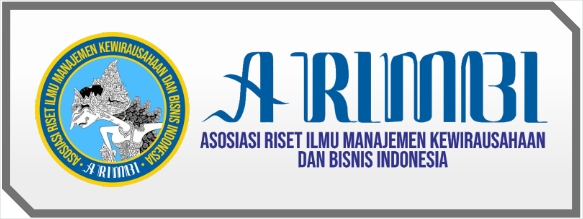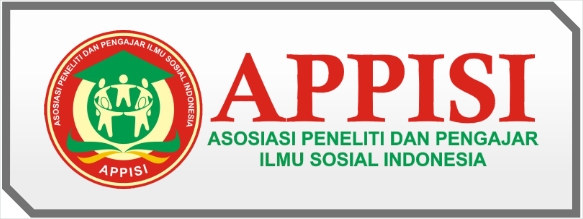Kajian Kepemimpinan Path Goal Theory Studi Literature Review
DOI:
https://doi.org/10.59581/jrim-widyakarya.v1i3.798Keywords:
Leadership, Path Goal TheoryAbstract
This study aims to explain leadership path goal theory. Literature study is used as a method in research. The data is taken, collected, and analyzed from books and scientific journals that have similar topics, then made into writings and conclusions. The results of the study show that using path goal leadership can increase employee motivation. The results applied with the application of the path goal leadership style can increase employee motivation. Path-goal theory recognizes four leadership behaviors for increasing subordinate motivation. The four path-goal leadership styles that serve to provide structure and reward to subordinates are directive, supportive, participatory, and achievement-oriented.
References
Bass, B. M., & Bass, R. (2008). The Bass Handbook of Leadership: Theory, Research, and Managerial Applications (4th ed.). New York: Free Press.
Bertocci, D. I. (2009). Leadership in Organization: There Is a Difference between Leaders and Managers. United States of America: University press of America
Bossidy, Larry dan Charan, Ram. 2004. Pelaksanaan: Disiplin Menjadikan segalanya Terlaksana. Penerbit Interaksara, Batam.
Day, D. V., & Antonakis, J. (2013). The Future of Leadership. In The Wiley-Blackwell Handbook of the Psychology of Leadership, Change, and Organizational Development (pp. 221– 236). https://doi.org/10.1002/9781118326404
Denney, A. S., & Tewksbury, R. (2013). Motivations and the need for fulfillment of faith-based halfway house volunteers. Justice Policy Journal, 10(1), 1-24.
Farida, U., & Hartono, S. (2016). Buku Ajar Manajemen Sumber Daya Manusia II. Universitas Muhammadiyah Purwokerto.
Garcia, Hector dan Miralles, Francesc. 2018. Ikigai: Rahasia Hidup Bahagia dan Panjang Umur orang Jepang. Penerbit Renebook, Jakarta
Gumus, S., Bellibas, M. S., Esen, M., & Gumus, E. (2016). A systematic review of studies on leadership models in educational research from 1980 to 2014. Educational Management Administration and Leadership, 46(1), 25–48.
Harrison, C. (2018). Leadership Theory and Research: A Critical Approach to New and Existing Paradigms. Switzerland: Palgrave Macmillan
House, R. J., & Dessler, G. (1974). "The path-goal theory of leadership: Some post hoc and a priori tests". Dalam J. Hunt & L. Larson (Ed.), Contingency approaches in leadership (hh. 29-55). Carbondale: Southern Illinois University Press.
House, R. J., & Mitchell, R. R. (1974). "Path-goal theory of leadership". Journal of Contemporary Business, 3, 81-97.
Indahsari, R., & Manafe, L. A. (2022). Peran Gaya Kepemimpinan Path Goal Untuk Meningkatkan Motivasi Kerja Karyawan: Gaya Kepemimpinan; Kepemimpinan; Motivasi; Teori Path Goal. Jurnal Visionida, 8(1), 60-71.
Kadarusman, D. 2012. Natural Intelligence Leadership: Cara Pandang Baru Terhadap Kecerdasa dan Karakter Kepemimpinan. Jakarta: Raih Asa Sukses.
Koch, Richard. 2018. Living The 80/20 Way: Prinsip Pareto untuk mendapatkan hasil luar biasa tanpa usaha yang luar biasa. Penerbit Gramedia, Jakarta.
Lussier, R. N., & Achua, C. F. (2016).
Leadership Theory, Aplication, & Skill Development (6th ed.). Boston, USA: Cengage Learning
Mu’faridah, E. (2018). Peranan Gaya Kepemimpinan dan Pengambilan Keputusan Dalam Upaya Meningkatkan Prestasi Kerja di PT. DAYA MAHA BERKARYA. OSF Preprints. https://doi.org/10.31219/osf.io/jrhg8
Northouse, P. G. (2016). Leadership: Theory and practice (6th ed.). Los Angeles: Sage
Northouse, P. G. (2018). Leadership: Theory and practice. US: Sage publications.
P. Robbins, Sthephen & A.Judge, Timothy. 2008. Perilaku Organisasi Ed.16. Jakarta:Salemba Empat.
Pradana, M. (2015). Pengaruh Gaya Kepemimpinan Terhadap Motivasi Karyawan di Ganesha Operation, Bandung. Jurnal Studi Manajemen dan Bisnis, 2(1), 24-39.
Putra, C. B., Utami, H. N., & Hakam, M. S. (2013). Pengaruh Gaya Kepemimpinan Direktif, Suportif, Dan Partisipatif Terhadap Kinerja Karyawan (Studi Pada PT. Astra Internasional Tbk. Daihatsu Malang). Jurnal Administrasi Bisnis (JAB), 2(2), 17.
Putranti, R. D. (2016). Pengembangan Model Kepemimpinan Path Goal Pada Supervisor Garment Dalam Mengelola Turnover Intention Di Kecamatan Klari Kabupaten Karawang. Media Ekonomi Dan Manajemen, 31(1), 1–13. https://doi.org/10.24856/mem.v31i1.2 85
Ridwan, M. M. (2019). Pengaruh Gaya Kepemimpinan Terhadap Motivasi Kerja Pustakawan Di Perpustakaan Universitas Muhammadiyah Yogyakarta (Studi Penerapan Gaya Kepemimpinan Path-Goal). Pustakaloka: Jurnal Kajian Informasi Dan Perpustakaan, 11(1). https://doi.org/10.21154/pustakaloka. v11i1.1601
Robbins, S. P., Judge, T. A., & Millett, B. (2015). OB: the essentials. Pearson Higher Education AU.
Robbins, Stephen, and Timothy Judge. 2009. Organization Behavior. New Jersey: Pearson Education Inc.
Rothausen, T. J., & Christenson, S. M. (2015). Leadership. Wiley Encyclopedia of Management, 1–6. https://doi.org/10.1002/9781118785317.weom020032
Siagian P. Sondang. Teori dan Praktek Kepemimpinan. Jakarta: Rineka Cipta. 2003.
Siswanto, R. D., & Hamid, D. (2017). Pengaruh Gaya Kepemimpinan Terhadap Kinerja Karyawan (Studi pada karyawan divisi Human Resources Management Compensation and Benefits PT Freeport Indonesia). Jurnal Administrasi Bisnis, 42(1), 189-198.
Stanley, D. (2017). Leadership Theories and Styles. In D. Stanley (Ed.), Clinical Leadership in Nursing and Healthcare: Values into Action (pp. 25–46). https://doi.org/10.1007/978-3- 319-11107-0_4
Tueno, N. S. (2016). Pengaruh Kepemimpinan Terhadap Motivasi Kerja Pegawai Pada Dinas Tata Kota Dan Pertamanan Kota Gorontalo. PUBLIK: Jurnal Manajemen Sumber Daya Manusia, Administrasi Dan Pelayanan Publik, 3(1), 68–76. https://doi.org/10.37606/publik.v3i2.6 9
Usman, H., & Eko Raharjo, N. (2013). Strategi Kepemimpinan Pembelajaran Menyongsong Implementasi Kurikulum 2013. Jurnal Cakrawala Pendidikan, 5(1), 1–13. https://doi.org/10.21831/cp.v5i1.1253.
Wulandari, A. N., & Rini, N. (2021, December). STRATEGI PEMBERDAYAAN PEREMPUAN BERBASIS EKONOMI. In Prosiding Seminar Nasional & Call for Paper STIE AAS (Vol. 4, No. 1, pp. 176-181).
Williams, F. K., Ricciardi, D., & Blackbourn, R. (2006). Theories of leadership. Encyclopedia of educational leadership and administration, 1-2.
Yukl, G. (2010). Leadership in Organizations (7th ed.). Upper Saddle River, NJ: Pearson Education.














